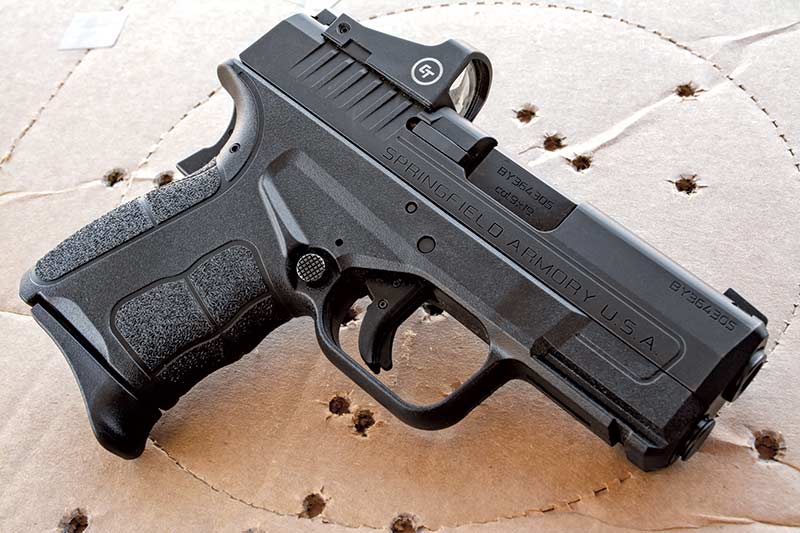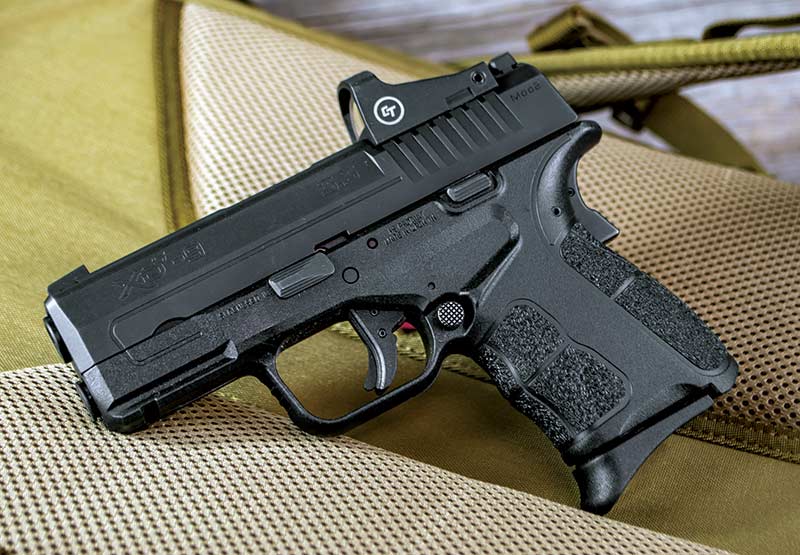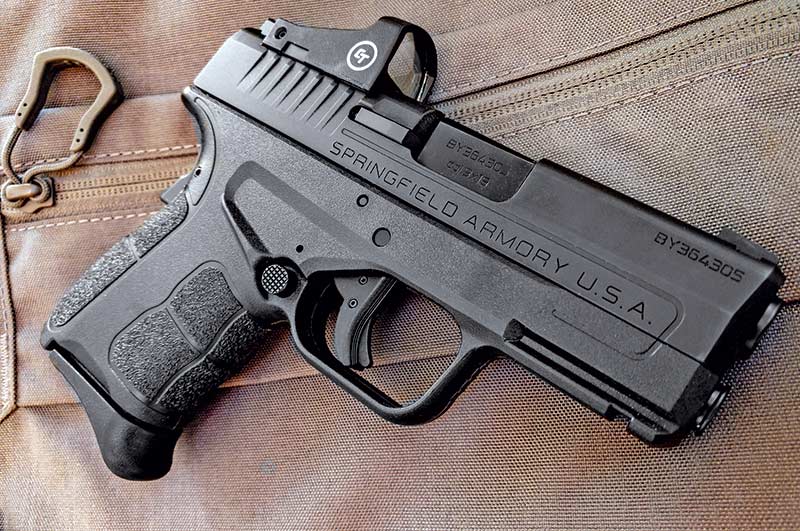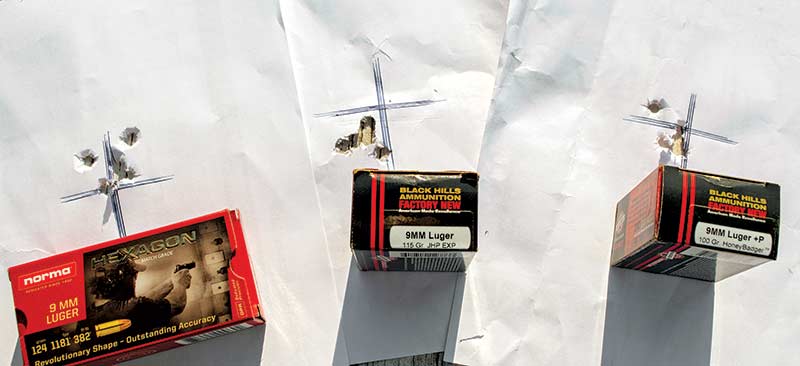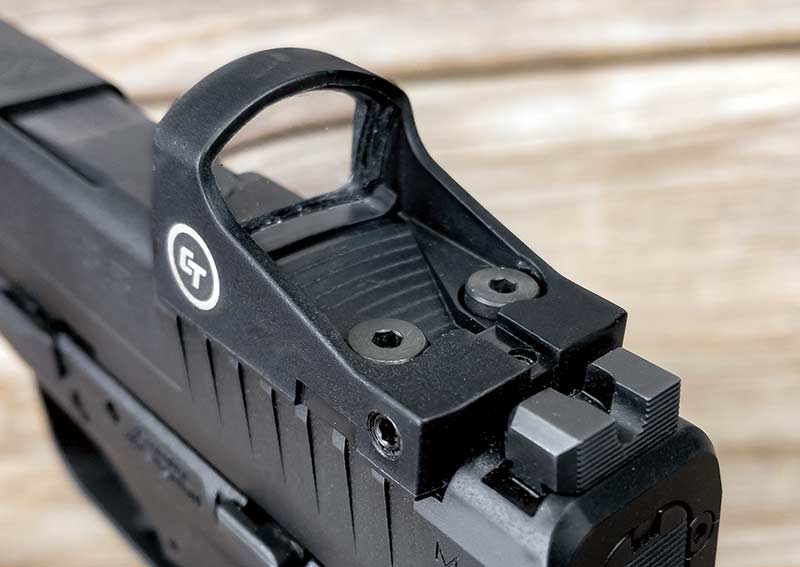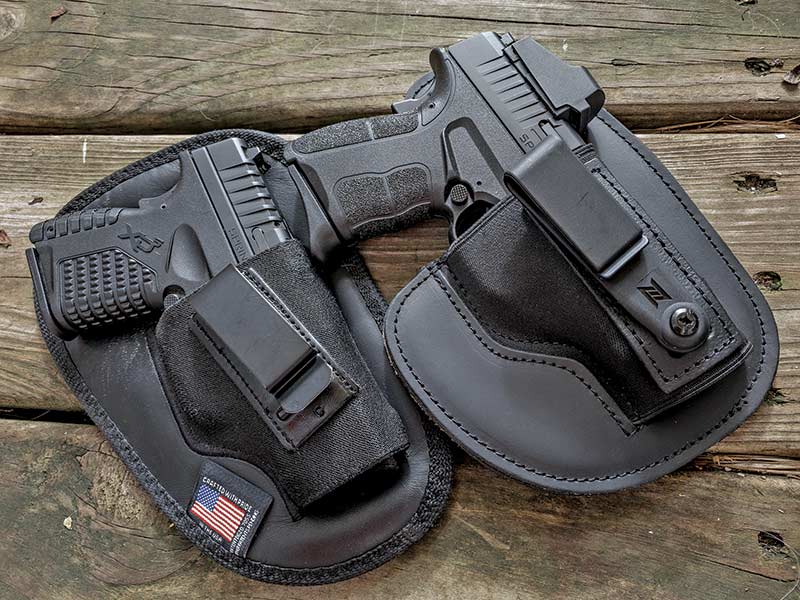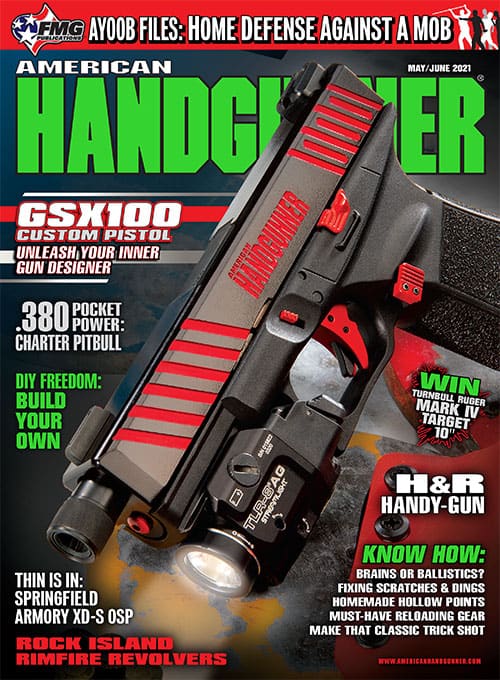SPRINGFIELD ARMORY XD-S MOD.2 OSP
Thin is In: Slender & Optics-Ready
I got my hot little hands on an original Springfield Armory XD-S nearly seven years ago. Sigh … to be young again. One of the initial attractions was its balance between compact size and being eminently shootable. It had enough weight and grip surface area to tame snappier 9mm defensive rounds while helping the shooter dominate even rapid-fire strings.
Size Matters
You might ask, why a single-stack in this era of compact double-stacks like the company’s own Hellcat? The nifty little pistol is approximately the same height and length but packs 11+1 capacity in its flat-base magazine configuration. The new XD-S Mod.2 OSP leases space to 7+1 with the standard magazine with pinky extension. The gun ships with a second extended magazine offering 9+1 total capacity.
Contrary to what you might assume, the XD-S is actually slightly larger than the Hellcat thanks to its 3.5″ barrel (3″ for the Hellcat) so overall length for the XD-S is 6.3″ instead of 6″ for the Hellcat. The XD-S is also exactly 0.4″ taller at 4.4″. Where the XD-S “wins” in the compact size competition is width. It’s about 0.1″ slimmer than the Hellcat, hence the explanation for the capacity differences.
Is the larger size a drawback? This depends on your criteria. Yes, overall the Hellcat is a “smaller” pistol for concealed carry. For shooting, the slightly larger size and weight of the XD-S is a benefit, at least to me. Given the choice, I’ll always choose a physically larger pistol should I have to put rounds on a target fast. More surface area for the hands, more grip height, and a longer sight radius make the shooter’s job easier. Additional weight helps with recoil and follow-up shot management.
So, there’s my tradeoff. Do I want something slightly smaller and arguably slightly easier to carry?
Or do I want more confidence in my shooting if and when the time comes? How do those factors rank against a four-round difference in capacity? That’s up to you. I love the Hellcat too, but there’s a reason an XD-S has been in my regular carry rotation for nearly seven years.
Slim Applications
The 0.1″ difference in width between the XD-S and Hellcat doesn’t sound like much, but it’s noticeable for certain applications. For IWB carry, the slimmer profile doesn’t yield a material benefit. Where the single-stack approach shines is under the light of different carry methods.
Since day one, I’ve often used an ankle holster for my original XD-S for either backup or situations where discretion is … appreciated. It fits into exactly the same size cigar box as a snubbie but is a heck of a lot slimmer and packs three more rounds than the classic .38.
For the same reasons, the XD-S makes a great pocket gun. The rules of spatial geometry always apply, so if you’re carrying a gun in a front pocket, a tenth of an inch matters. Not only for printing and concealment, but for the draw. A handgun that’s slightly too big for a pocket opening acts like a Monkey Trap. When you assume a firing grip in the pocket, you may experience troubles getting your gun-filled hand out cleanly.
Pleasant Surprise
As the XD-S OSP is a pocket gun of sorts, I felt it appropriate to do some quick accuracy evaluation at 15 yards. Using an impromptu wobbly table (a pistol rest weighed down by a bag of lead shot on a plastic range barrel) I fired five-shot groups with three types of ammo.
I chose two from Black Hills, the most finicky ammo makers on the planet — that means consistency. The 115-grain JHP EXP load grouped into 1.01″ while the Black Hills 110-grain HoneyBadger turned in an impressive .71 group. Pleased with those results, I next tried the Norma Hexagon 124-grain match load. That also showed off with a 1.17″ group. More accurate than I am? Check.
To get a feel for how this pocket pistol handles, I unleashed torment on a Throom Targets plate rack and dueling tree. I won the duel with myself in case you’re wondering. Made from Shoot-Throo self-healing polymer, you can shoot these “plates” from contact distance if you like, as bullets pass right through the targets, mounts and even the “bolts” used for plate angle adjustment. This makes it great for up close and personal practice with a carry gun like the XD-S OSP.
The XD-S is easily controllable, even with stoked-up self-defense ammo. The grip texture prevented rapid fire movement in the hand but wasn’t overly abrasive. Recoil was perfectly manageable, bordering on tame. The grip safety resides only in the subconscious. I never had to think about it or acknowledge its presence. It just quietly did its job and let me engage in wanton plate perforation. Bottom line: This pistol is pleasurable and fun to shoot. It’s one you’ll want to take to the range, not one of those pain-inducing micro pistols that discourages regular practice.
Optics Considerations
You can order the XD-S OSP in two configurations: with Crimson Trace CTS-1500 red dot pre-installed or without. The basic version comes with a slide cut and cover plate, so it’s ready to go with the optic of your choice. The Shield Sights RMSc fits right on sans adapter plate as the XD-S optics footprint is Hellcat-compatible. With the Shield, there’s also a rear sight channel so the standard irons co-witness through the glass.
The model I’ve been testing features the Crimson Trace CTS-1500 red dot factory installed. Like the Shield RMSc, it features a groove so you can use the standard white dot front and “U-notch” rear sight through the bottom of the optic. The red dot sight itself did its job, with one glaring exception. I stumbled upon an issue warranting additional investigation when shooting late one afternoon. The sun was high behind my target area, and I found the glare on the lens showed me a strange effect. Rather than seeing my target, I had a nice view of the internal projection system. I had a couple of other pistols handy with different optics and I had no similar troubles, so I can only guess it was caused by either a lack of lens coatings or a coating treatment that didn’t adequately reflect glare.
Until I learn more, I might consider the CTS-1500 configuration for range use but choose the optics-ready model with my choice of red dot for carry. Chalk this up to one of those differences between less and more expensive optics.
Closing Arguments
I love this little pistol. Yes, I can get more capacity with a Hellcat (also a favorite in my book) but for aforementioned reasons, I do embrace the single stack tradeoffs and size differences. I’ve already notified Springfield Armory that I’d like to buy this one — it’s an investment well worth the money.

